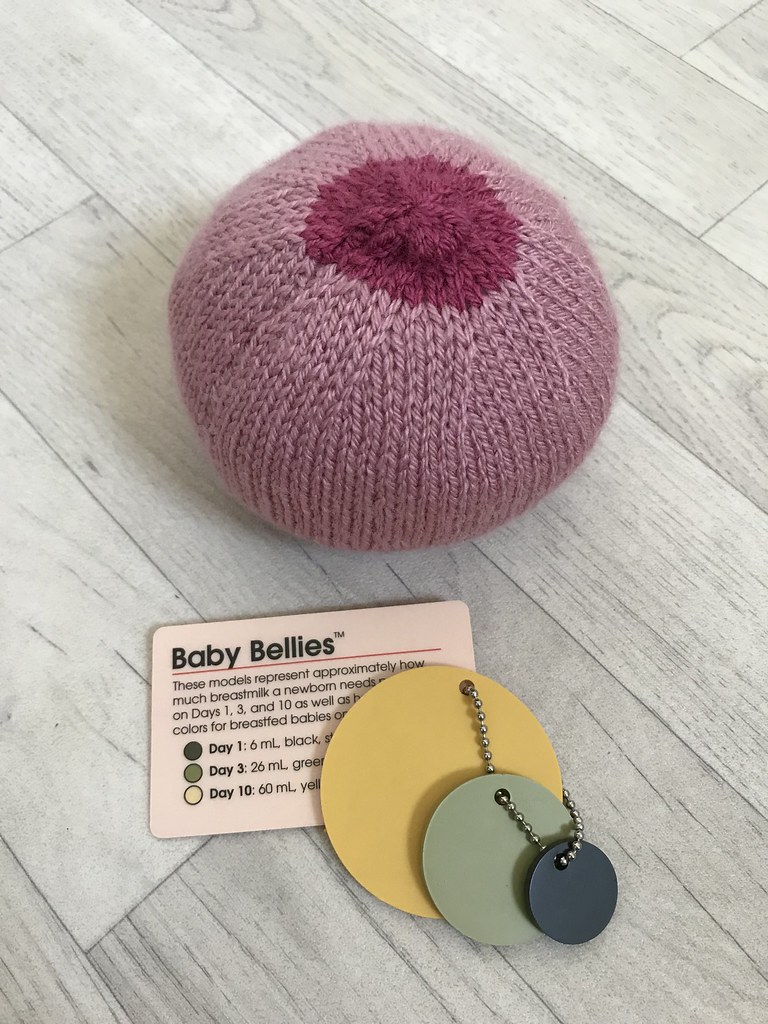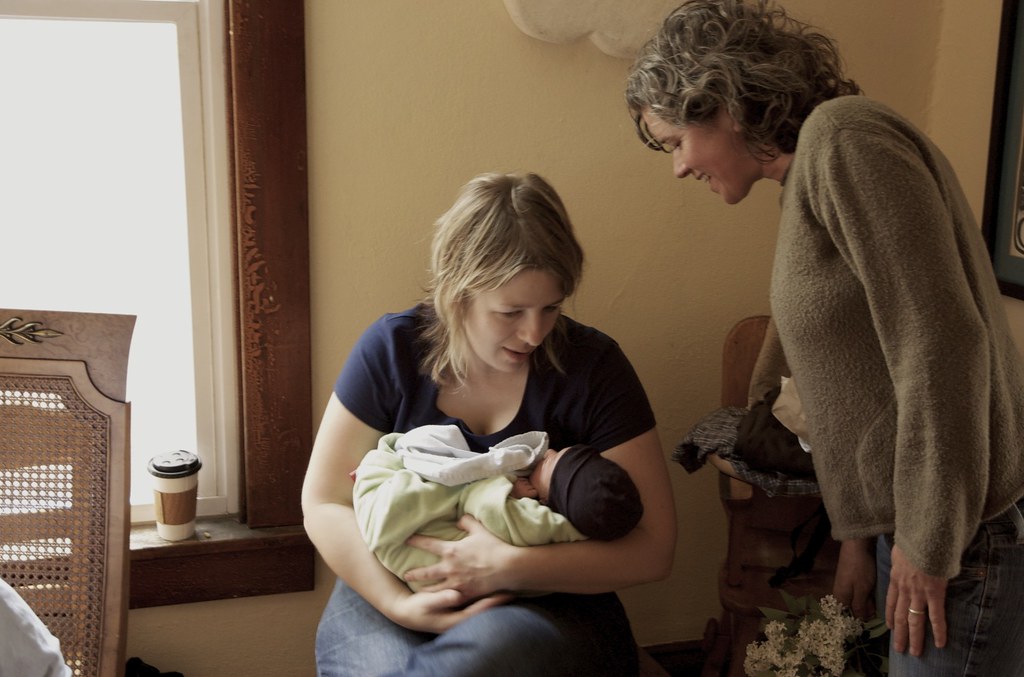|
I’m going to share my favorite simple tips for a great start!
I understand that looking for straightforward answers can drag you down the ‘google’ rabbit hole. Speaking to friends and family can be dizzying with varying advice. And even professionals will sometimes offer different approaches. I often hear, “I keep hearing different answers to my questions!”. Yup! It’s not you! There can be more than one ‘right’ answer. Finding the best answer for you requires an individualized approach. If it’s a breastfeeding question of any complexity, ask an IBCLC! Others are well meaning and may or may not have the right answer. And what worked for their baby may not be right for yours. International Board Certified Lactation Consultants (IBCLC’s) are trained in current evidence based information in Lactation and take continuing education regularly. I happen to always be in the midst of a webinar or headed to a conference (Pre-covid). We also happen to be a tight knit group of practitioners. We pool our collective wisdom and bring it to you. The other reality of lactating (and parenting) is that the ‘right’ answer or advice for a one day old baby is different for a three day old baby and certainly different for a one week old and so on. Then there are specific details unique to your situation that may alter these answers. When seeking your answers, an IBCLC can support you in areas of basic education and complex situations. My personal motto is “Knowledge is Power”. (credit-Thomas Jefferson) I have noticed that the more I know, the less I worry. I can also act sooner to prevent a real problem. This is absolutely essential in breastfeeding. Basic education on the normal expectations for the first few weeks (and beyond) helps us immensely as parents. We show more resilience during those middle of the night cluster feeding sessions when we have learned about them ahead of time. We can reach out for skilled support at the first sign of an issue. This can prevent problems from compounding and worsening and brings us to a resolution much faster. If you are familiar with some basic warning signs, you can reach out and prevent such issues as slow weight gain and low milk supply. See my blogs on “What’s all this about Tongue Tie?” and “How do I know if my baby is getting enough milk” https://www.lactationconsultantathome.com/blog/previous/2. So how do I start off strong in my journey?? I highly recommend a breastfeeding class prenatally or a prenatal consultation with an IBCLC to prepare for birth. Ask for help often in those early days when you may have access to help. Hit the call button and ask for the nurse or lactation consultant especially if nursing is challenging or painful. Don’t let anyone tell you that nursing is supposed to hurt in the beginning. It’s not!! Keep your baby in your room at the hospital and at home. You will see and hear their early feeding cues and be able to respond to them faster. Breastfeeding more often will result in a higher milk supply sooner assuming other factors are normal. This strategy also results in easier latches when your baby is less frantic Limit those visitors! You can end up ‘entertaining’ them when you are exhausted, uncomfortable and really wanting to bond and nurse your baby. Sleep anytime you can fall asleep between feedings! Stock your pantry with high protein, higher fat healthy snacks to munch on during nursing sessions. Remember your baby will often need to be held by you or your partner/family between feedings. They crave closeness and this is normal! Skin to skin contact is best. Schedule an in-person or virtual consultation with an IBCLC postpartum if you are still having challenges. IBCLC’s are specialists in Human lactation. We are trained specifically to work with the lactating parent and baby as a couplet and assess and create a care plan. If you are concerned about your journey and not getting answers from your providers, seek guidance from the experts. Get off Google!!!! Most of the answers you will get are wrong and upsetting! Most of the time, when I do this myself, I come away thinking I’m dying of some terrible disease. Here are two reliable resources for basic information: www.kellymom.com and https://www.llli.org/ I can’t overstate how helpful a breastfeeding class is for expectant parents. I always observe that those who have taken one are more relaxed and flexible facing their nursing journey no matter what the circumstances. They feel empowered and more able to accept the truly unpredictable nature of having a new human being in their lives. A prenatal consultation with an IBCLC will cover all of these basics plus individual concerns. Knowledge is power!! Congratulations on your new journey!
0 Comments
What is an IBCLC? IBCLC’s are the gold standard in Lactation Care. IBCLC’s are certified by the International Board of Lactation Consultant Examiners (IBLCE), which requires re-certification every five years. To become an IBCLC we complete 90 hours of lactation specific education, hold a degree in a health sciences field and have 1000 hours of lactation specific clinical experience. To achieve the re-certification we must take 75 hours of continuing education. IBCLC’s collaborate with health care providers. When should you consult an IBCLC? Endless Feedings (usually this is more than 12 feeds in 24hr repeatedly) You are not sure if your baby is getting enough to eat Pain while nursing Breast or nipple pain Nipple damage (sore, cracked, blistered or bleeding) Low milk supply Oversupply Plugged ducts/ Mastitis Overactive letdown Baby is not latching or not able to maintain the latch Baby is sleepy at the breast, not nursing actively Tongue Tie/Lip Tie/Buccal Tie Baby weight gain issues Concerns about potential reflux Pre-maturity Twins/Triplets Positioning Pumping/Flange fit Transition to solids Back to work planning Special health care needs Breastfeeding and Lactation Education Weaning/Milk Suppression This list is not meant to cover every reason to consult an IBCLC IBCLC's can help in numerous ways in common, and complex feeding issues. We are uniquely positioned to assess and create a workable care plan with your feedback that keeps your specific goals in mind. Today I am writing about Telehealth Lactation Consults. You may also hear the term Virtual Consults. This method of support has been a part of many IBCLC’s (International Board-Certified Lactation Consultant’s) repertoire for years before the current health crisis. Recently many IBCLC’s have added this service and sought training on making this successful for our clients and families. What is a Telehealth Consult? A Telehealth or Virtual Consult is a consult that is conducted through HIPAA compliant, secure live video. This means I am still adhering to regulations to safeguard your privacy and medical information. A consult through video has limitations and does not replace an in-person consult and examination. This is also true if you have a Telemedicine visit with your MD. What can I do to support you and your family through Telehealth?
What is different in a Telehealth Consult?
Please have a person available to help position the camera/computer during the consult (For those with scheduling issues, I can arrange evening consults) Please have sufficient lighting in the room and a separate portable light/lamp that can be directly aimed at a subject Have your camera available to take pictures/videos for later review Telehealth consults, due to their nature, may require more follow up messaging (this is included) IBCLC’s are a creative group of professionals. We have always utilized videos, gesticulating with our hands and using props like dolls and knitted breasts to aid us in teaching! We have adapted to Virtual Lactation. Let us be there for you and your family during this time! Let’s keep the milk flowing, prevent problems and keep the babies/children and parents smiling on this journey! Join us online! Lactation Consultants as a group talk a lot about Hand Expression. There are so many reasons why we stress this technique. Let's talk about how this technique can help boost milk supply and be your best friend throughout Lactation.
What is hand expression? This is a technique to use your hands to effectively remove milk. It is an alternative to an electric or manual pump. (Link below for a great video on how to do this) So why hand express? 1. Boost milk production (more on this in a minute) 2. Get some drops to entice your baby onto the breast 3. Feed your baby those liquid gold drops via a spoon when they are not latching well or sleepy 4. Soften the breast during engorgement to aid in latching the baby 5. Get some drops to apply milk to sore nipples. This helps prevent infection and speed healing. (see an IBCLC for persistent sore nipples or nipple damage) 6. Drain the breast instead of using an electric or manual breast pump (This is critical if one loses electricity and your pump does not have a battery) 7. Hand expression is a key part of managing plugged ducts Let's talk again about milk production. There are many circumstances in which the baby is not nursing in the early days. It is then important to stimulate your milk production in other ways. In the first 3-5 days after birth the breast milk is very thick. When nursing effectively babies are very good at removing this early milk called colostrum. Babies create a vacuum and massage the ducts. An electric pump uses only suction. It is much less effective at removing the thick milk. Think of placing an electric pump flange on the end of a toothpaste tube. It would have trouble removing the toothpaste. (the nipple stimulation still triggers the oxytocin and prolactin to produce milk so this is why pumping is also recommended). But hand expression is able to remove many more drops of milk than the electric pump in these early days. The more milk removed, the more your body makes! Combining hand expression with an electric pump is the ideal regimen to initiate a large supply if the baby is not going to the breast effectively 8-12 times every 24hr. In one study, it was shown that adding hand expression in addition to traditional pumping resulted in a large milk supply. "Mothers who used hand expression more than 5 times a day in the first 3 days yet pumped with the same frequency as other study mothers, expressed an average of 955 mls, about a quart a day by 8 weeks. This is more than a term 4 month old would need." (Morton et al., 2009) An additional study demonstrated a higher milk yield with hand expression. "Net milk yield per woman was 2 mL manually (median; range: 0–12.6 mL) and 0.6 mL (0–7.2 mL) by electric expression (P < 0.05)." (Ohyama, M., Watabe, H., Hayasaka, Y., 2010) Milk supply is determined by how much milk is removed from the breast. Early and frequent effective removal is the best way to achieve a healthy milk supply. Hand expression is an essential part of boosting supply in those early days and a useful technique for the duration of lactation. This technique takes a little practice but comes easily quickly. Hand Expression Video https://med.stanford.edu/newborns/professional-education/breastfeeding/hand-expressing-milk.html (Morton, 2006) References Morton, J., Hall, J., Wong, R. et al. Combining hand techniques with electric pumping increases milk production in mothers of preterm infants. J Perinatol 29, 757–764 (2009). https://doi.org/10.1038/jp.2009.87 Morton, J., Newborn Nursery https://med.stanford.edu/newborns/professional-education/breastfeeding/hand-expressing-milk.html, 2006 Ohyama, M., Watabe, H., Hayasaka, Y., (2010). Manual expression and electric breast pumping in the first 48h after delivery. Pediatrics International. Volume 52, Issue 1. Pages 39-43.  Historically it was common place for hospital staff to bathe the newborn within 2 hours of birth or even sooner years ago. Bathing the newborn separates the baby from the mother in this critical time period. The baby also has more difficulty maintaining their temperature this soon after birth. This can lead to longer time periods under the warmer. Even twenty four hours later, babies can tolerate a quick bath with fewer temperature drops. But enough background. On to the evidence!
Multiple studies have been conducted on delayed bathing comparing multiple variables important in the newborn period. They studied temperature regulation, glucose levels, breastfeeding rates, skin to skin, bonding and parent participation in newborn care. Here are just some of the amazing results: One study compared babies that received a bath at two hours of age versus a bath at twenty-four hours old. The study found that breastfeeding rates improved by 10 percent and formula supplementation decreased by 10 percent. There was a decrease in incidence of low glucose(hypoglycemia) and lowered temperature(hypothermia). They found increased bonding and increases parent participation in infant care. (LiVolsi, 2018) A another study found benefits of the vernix which provides nutrients and protection the baby's skin. Vernix is the coating on the baby's skin at birth. This study also found significant beneficial impacts on increased breastfeeding rates, and a lowered incidence of low glucose (hypoglycemia) and hypothermia. They also found increased skin to skin care and bonding! So many benefits from one action. (Liberth, Fontana, 2018) The World Health Organization states: "Bathing should be delayed until 24 hours after birth. If this is not possible due to cultural reasons, bathing should be delayed for at least six hours. Appropriate clothing of the baby for ambient temperature is recommended. This means one to two layers of clothes more than adults, and use of hats/caps. The mother and baby should not be separated and should stay in the same room 24 hours a day." (2012) Note: Clothing is needed if skin to skin is not being performed. A blanket draped over the back of the baby and a hat is required in the early hours with skin to skin. Hospital staff will instruct you on safe skin to skin positioning. The baby has been bathed in the amniotic fluid for months. A woman's montgomery glands, located on the areola, secrete a substance that is similar in taste and smell to the amniotic fluid. This assists the baby in finding the nipple to begin nursing. Delaying the bath preserves the familiar scents for the baby. This is one of the many reasons that delaying the bath can help with breastfeeding. Keeping the parents and the baby together for more hours and especially during the critical early hours is very important. By minimizing incidences of hypothermia and lowered hypoglycemia, this powerful time period is protected more successfully. Simple but powerful practices have immense positive effects on outcomes for babies and parents. Ask for a delayed newborn bath! References LIBERTH, M.; FONTANA, J. Benefits of Delayed Bathing. JOGNN: Journal of Obstetric, Gynecologic & Neonatal Nursing, [s. l.], v. 47, p. S30–S31, 2018. Disponível em:<https://search-ebscohost-com.libdb.fairfield.edu:8443/login.aspx?direct=true&db=rzh&AN=130486177&site=ehost-live&scope=site>. Acesso em: 6 maio. 2019. LiVolsi, K. (2018). Improving Neonatal Outcomes through the Implementation of a Delayed Bathing Program. Improving Neonatal Outcomes Through The Implementation Of A Delayed Bathing Program, 1. Retrieved from https://search-ebscohost-com.libdb.fairfield.edu:8443/login.aspx?direct=true&db=rzh&AN=131799073&site=ehost-live&scope=site WHO (2012), WHO recommendation on bathing and other immediate postnatal care of the newborn. retrieved on 5/6/2019 https://extranet.who.int/rhl/topics/newborn-health/care-newborn-infant/who-recommendation-bathing-and-other-immediate-postnatal-care-newborn I am sitting down today to write about a serious issue intimately related to breastfeeding. There is an enormous amount of pressure placed on new parents to breastfeed. I acknowledge that the known science supports breastfeeding as the ideal feeding choice for newborns. Breastfeeding provides more than nutrition and medical benefits to the lactating parent and infant. It also is a powerful bond between a parent and their baby.
That bond is also formed when bottle feeding in many different forms. There are many reasons why a parent may not breastfeed. It may be a personal choice. Breastfeeding can include struggles which make the journey difficult. I have a full time job assisting parents in their goals so I understand the hurdles that can and do exist. The bottom line is this. If a parent is bottle feeding it is not my place to judge or place guilt on that parent. Society should not place guilt on them either. If they desire assistance in reaching breastfeeding goals, I am there! Our country is a paradox when it comes to messages to new parents and breastfeeding. The initial message is, "Breastfeed, it's the best for baby". Some parents are shamed for not breastfeeding. At the same time the support for breastfeeding in the US is seriously lacking. There is still no paid leave for lactating parents in the US. Many people struggle with adequate time to pump, clean areas to pump and harassment during pumping. Insurance companies are required to cover Lactation counseling but they still often find loopholes around this. Parents have to wait until they deliver their baby to request their electric breast pump from their insurance companies. This leaves them without a pump for a week or more after discharge from the hospital. People continue to face harassment when breastfeeding in public. Lack of knowledge about normal breastfeeding leads to misinformation flowing from many sources. This can lead to early cessation of breastfeeding. Our culture is one of isolation for many new parents. Many people have no family support nearby or limited support. Many have never seen anyone breastfeed before. This produces a larger learning curve when initiating nursing. Support groups, friends, IBCLC's and other support professionals are needed in greater amount and accessibility. If a parent is struggling due to these issues, we need to rally behind them and support them in their breastfeeding goals. We know this is sometimes difficult and parents are left to struggle alone often. This needs to change. Choosing a feeding method for your baby is an emotional and complicated decision which may evolve and change over time. And honestly it is none of my business why a parent chooses one method over another. I am there to provide education and support for all parents on their journey. A new parent's emotional health is paramount in the post partum period and beyond. We have to discuss choices, challenges and feelings openly. No one has the right to judge a person's individual decision to breastfeed, bottle feed or formula feed. We must support our new parents in their decisions and celebrate their strength in knowing themselves and their goals. This is a call to action to improve breastfeeding support, and new parent support and education. We can do better together. Let's talk about Triple Feeding. Triple feeding is when a Lactating parent breastfeeds, pumps and bottle-feeds at every feeding. Does that sound exhausting? It is! It is necessary sometimes but it is something I recommend only when truly needed. There are very important points to keep in mind if you are on this care path. First let's review some reasons why this may have been recommended.
1. Excessive newborn weight loss 2. Jaundice 3. Sleepy at breast 4. Late pre-term challenges (babies born between 34-37 weeks) 5. Ineffective suck pattern at breast 6. Difficulty latching (This list is not exhaustive) The first important point is timing: Newborns eat every 1-3 hours so Triple Feeding often can feel like parents have no break at all. I recommend keeping the whole cycle or process of the feeding to 40 minutes or less. This means, breastfeeding, pumping and bottle-feeding all in 40 minutes. This becomes a challenge when the baby is actually improving and nursing better and longer. In this scenario, we don't limit their time on the breast. But if your baby is simply asleep despite adequate waking techniques, trying to wake them for an hour is counterproductive. Give the nursing a good attempt but if its been 10 minutes, and your baby is still not latching well, you can move on to the bottle portion of the feeding. There will be many times to breastfeed in the future. Luckily babies reflexes to suck and find the breast are present for months. The second point concerns duration: This is a Short Term Care Plan! I educate my clients that they can proceed with Triple feeding for 48-72 hours. At that point, a re-evaluation by your (IBCLC) Lactation Consultant is necessary. The goal of Triple Feeding is to build and maintain your milk supply while addressing your baby's latch issues and keeping the baby fed and energized to learn to nurse. Milk supply will increase over 3 days with adequate stimulation and the baby has also potentially changed in that time. A Lactation Consultant (IBCLC) can re-assess your individual situation and recommend a more sustainable long term plan based on your needs. It is not wrong to continue this method for longer than 3 days. But it is a lot of work. Working with a knowledgeable IBCLC who can support you throughout this process is essential. Triple feeding has a place in reaching lactation goals but it can also be discouraging as it is a lot of work. It is recommended for a short term period. During that time, you and your IBCLC will be finding the difficulty and taking actionable steps to improve that situation. As direct nursing improves, triple feeding gradually stops. Your Lactation Consultant can also help you figure out good time management and alternate methods if you find yourself engaged in triple for more than several days. Enlisting partners to complete the bottle portion of the feeding is helpful. Family members can also clean pump parts and prepare bottles. Reaching out for help and support is necessary! This is the number one question I field every day. We can't measure what comes out of our breasts. We can't feel how much is going into our babies during a feeding. Our breasts go through so many changes and one's breasts can feel full, filling, engorged and soft. In all these cases, your baby can be taking in plenty of milk. So how is a new parent to know if the baby is receiving enough milk?
Luckily there are measurable, objective methods to determine if your baby is eating enough and growing adequately. 1. What goes in, must come out! A baby 7 days old and older should have a minimum of 6 wet diapers every 24 hours and 3-4 stools every 24 hours. In the first week after birth these numbers are smaller and should be carefully tracked. They are as follows: Day 1: 1 urine, 1 stool Day 2: 2 urine, 2 stools Day 3: 3 urine, 2 stools Day 4: 4 urine, 3 stools Day 5: 5 urine, 3 stools Day 6: 6 urine, 4 stools Day 7: 6 + urine, 4+ stools If your baby has less than the numbers above, you must call your Pediatrician. If your baby has more than these numbers, that is great! It is normal to see 8-10 diapers every 24 hours by day 7 of life. Usually by day 4 or 5 the stool also will change to a yellow color and become 'seedy' in consistency. 2. The baby's weight over time will tell you how the baby is doing while breastfeeding. Baby's can lose up to 7% of their birth weight in the first week of life. They should get back to their birth weight by day 7-10 days post birth. They usually will then gain 1/2 to 1oz a day after that in the first month of life. Pumping is not an accurate method to evaluate how much your baby is taking from the breast.The baby, in general, will remove twice as much milk from the breast as even the best double electric pump can remove. Pumping is very different from breastfeeding. It is mechanical. Some women don't respond very well to a pump or may be using a pump that is not ideal for their breast. The size of the flanges and the suction power and cycles also effect milk removal amounts. Pumping is a great addition while breastfeeding in many circumstances but it is not a measure of how much your baby is transferring from your breast. 3. An additional method to evaluate your baby's intake is a direct measure during a feeding. A weight is done prior to nursing and then retaken after the feeding. The difference will be the amount your baby took from your breast. For example, if your baby weighed 3000 gm before the feeding, and then weighed 3045 gm afterwards, we can deduce that your baby took in 45 ml or 1 1/2 oz of breast milk during that particular feeding. Some people will want to have this evaluation done to make sure breastfeeding is going well or if they are experiencing any difficulties. An International Board Certified Lactation Consultant (IBCLC) will include this in their evaluation and observe a full feeding to develop a working care plan for you and your baby. 4. Observing your baby can also tell you if they are satisfied after a feeding. In the first few weeks of life, many babies are very sleepy in general and the following items are not reliable. When babies start a feeding, often their hands are clenched in fist. When they are full, their hands relax and their fists open up. Their body is very relaxed and they may sleep. If your baby continues to cry and display hunger cues after a long feeding especially more than once, you should seek help from your Pediatrician and an IBCLC. I hope this blog will give you more confidence in breastfeeding. These are general educational guidelines. They are not to be taken as medical advice. Please reach out to a Doctor if you have any concerns about your baby's intake. Today is World Breast Pumping Day, a day we celebrate all the women working so hard to provide that precious breast milk for their babies. Breast milk is so important for the health of babies. There is a myriad of reasons to pump. Personal choice, difficulty latching, prematurity, going back to work, and donating breast milk are just some that come to mind.
Pumping is a difficult undertaking. Our bodies sometimes don’t respond as easily to a mechanical pump as they do to a nursing baby. Finding the right pump and correct flange sizes is important. There is constant cleaning of pump parts. There is the warming of the breast milk. Finding the time and place to pump especially at work can be a continuing challenge. Sometimes women who pump can be more at risk for struggles with plugged ducts and mastitis. But they carry on providing that liquid gold for their babies. Today we celebrate them. One day I met a mother who was pumping a more than adequate amount of milk for her baby. She had struggled with latch issues and felt defeated. She said to me, “I’m disappointed that I couldn’t breastfeed”. I said, “But you Are breastfeeding. Providing breast milk is breastfeeding.” She was so happy and said she never looked at it that way. I did and do recognize her sense of loss over a direct breastfeeding experience. But I also wanted to celebrate her awesome victory. Pumping is Not easy. Breastfeeding is not easy. Today we celebrate World Breast Pumping Day. Those babies love that milk! As a Lactation Consultant I get inundated with questions about pumping. Everyone I speak to has questions about when and how to pump. I want share some basics on using a breast pump. Let's talk about efficient milk removal. The best method to remove milk is an effectively breastfeeding baby. They can remove twice the amount of milk that an electric pump can! This reminds us that what we can pump is not necessarily the same as what the baby gets. The next best method is Hand Expression. Compressing the ducts between our fingers is very effective. Then there are hand pumps and multiple types of electric pumps. An electric pump is not so good at removing that thick milk (Colostrum) in the first few days. Do not be discouraged. You will see results usually starting by day four post delivery. The most powerful pumps are the multi-user pumps that are often available for rent at hospitals and pharmacies. These pumps cannot transfer any infection between users. One model is the Medela Symphony. This pump is recommended in the first month after delivery in certain circumstances: history of low milk supply or significant risk factors for low supply, separation from the baby (baby is in the Neonatal Intensive Care Unit), twin delivery, and a baby who is not nursing effectively. (This list is not exhaustive). This type of pump has a more powerful motor and is intended to help initiate a milk supply. Commercially available pumps are intended to maintain a supply that is already established. The list of these pumps is long. Some examples include the Spectra, Medela pump in style, Ameda, etc. Your insurance company has to provide you with a new double electric breast pump with every pregnancy. These type of pumps are not rated as multi-user in general and should not be shared. There is a chance of infection between users. Also their motor is designed to last through regular use for approximately a year. It is possible that using it a few years later with a new baby will not produce the same results. The motor can be worn out. This is why insurance provides a new pump with each baby! On to the actual pumping! Pumping is hard! Let's be honest. It's not fun. It's mechanical and sometimes our bodies don't respond the same way to a pump as they do to our adorable baby. The let down is partially psychological. Some techniques that can help are: looking at a video/pictures of your baby while you pump, smelling clothing that your baby was wearing, covering the collection bottles with a blanket, and distracting yourself with a fun activity (chatting on phone, TV, social media). Don't watch the milk drop into the bottle! Remember that sometimes trying a different brand pump can make a big difference for some women. If you are having a challenge with your milk supply, a consult with a Lactation Consultant is the best way to get back on track. The size of the flanges or cups that go on your breasts is very important. If they are too small or too big, this can negatively impact milk supply and cause pain and damage to your nipples and/or breasts. It is also important that pumping never hurt. Do not turn the suction pressure up higher to attempt to get more milk. Pain inhibits the letdown! The amount and times to pump vary significantly depending on your individual situation. Remember to wash your pump parts every time with soap and water. Sanitizing the parts once every 24 hours in the first 2 months of the your baby's life is also recommended. This can be accomplished with your dishwasher, microwave steam bags or a quick boil. Storage guidelines for breast milk: www.cdc.gov/breastfeeding/recommendations/handling_breastmilk.htm (In addition, if your baby is premature or has health challenges, it is recommended to refrigerate your milk directly after pumping) There are many different ways and reasons to use a breast pump. Your Lactation Consultant can advise you on the best course of action for your particular situation. You can be successful pumping with the right knowledge! |
AuthorCathleen Walker Archives
September 2023
Categories |






 RSS Feed
RSS Feed